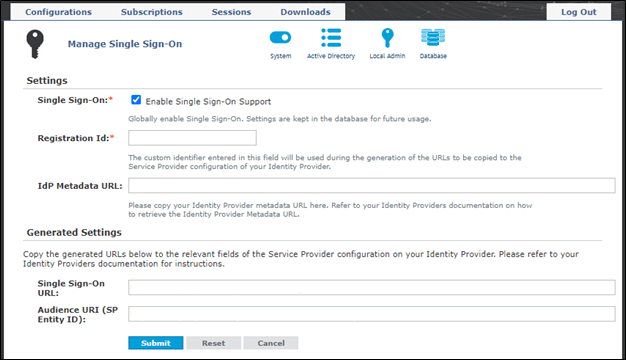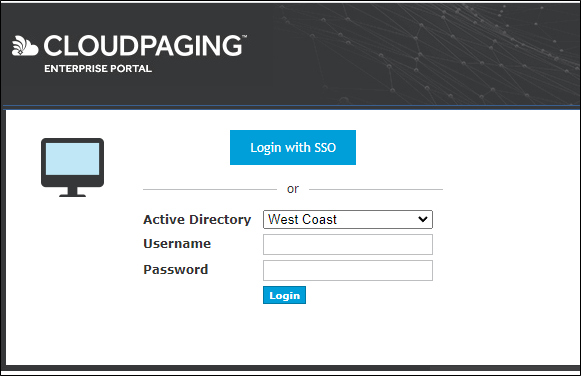We’re thrilled to roll out the latest version of Cloudpaging Server and Enterprise Portal. Enterprise Portal 9.7 improvements significantly enhance the administrator experience with new single sign-on (SSO) features and support for more complex Active Directory configurations.
The latest version of Cloudpaging Server is compatible with Cloudpaging Player versions 9.2.0 and higher, with support for appsets packaged with Cloudpaging Studio version 8.8.x and higher.
Single Sign-On Using SAML 2.0
Instantly Expand SSO Options for Enterprise Portal
Enterprise Portal now supports SSO using SAML 2.0 authentication. This enables you to integrate Enterprise Portal to virtually any identity provider that utilizes SAML 2.0 authentication, such as Okta, and Keycloak. Of course, these identity providers integrate to a vast number of third-party SSO providers.
For example, Keycloak supports the following third-party identity providers:
- BitBucket
- GitHub
- GibLab
- Microsoft
- Openshift v3
- Openshift v4
- PayPal
- Stackoverflow
Effectively, by launching support for SAML 2.0 authentication, Enterprise Portal 9.7 customers can instantly expand the number of third-party SSO providers they can utilize – significantly simplifying the experience for end users.
Getting Set Up
Incorporating your respective Identity Provider (IdP) with support SAML 2.0 is straight forward. Let’s use Okta as an example.
First, sign into Okta as an administrator. Create a new application under Applications > Applications > Create App Integration. Select SAML 2.0.
Next, switch over to Enterprise Portal. Click on Configurations and select Single Sign-On. The following page will display:

Fill out the form and copy the pre-populated Generated Settings information to your IdP. In this case, you would copy the Single Sign-On URL into Okta’s Single sign-on URL. Repeat this for the Audience URI, as well. When doing so, please verify this information is correct and that these URLs can be reached from end user browsers (e.g., be sure firewall rules will allow access to these URLs).
Once this is complete, you can go back to the Okta administration portal and complete the following:
- Under Help Okta Support select understand how you configured this application
- Next select I’m an Okta customer adding an internal app
- On App type, check This is an internal app that we have created
- Click on Finish
- Now the app integration is created.
- From this screen, under Metadata details, click on Copy
The final step is finalizing everything within Enterprise Portal. Return to the Configurations tab and select Single Sign-On. Paste the recently copied metadata URL into IdP Metadata URL and click on Submit.
Restart Enterprise Portal and you will be all set! End users will now see a new button on the login screen titled Login with SSO.

Incorporate Middleware into the Authentication Process
Integration to additional IdP providers enables middleware, such as NetID, to incorporate smart cards to the authentication process. For example, large healthcare organizations that utilize badging for workstation logins can now streamline the sign-on process with a simple card swipe.
Integration to Multiple Active Directories
One of the primary drivers behind this feature was to support customers utilizing cross-forest domain. Enterprise Portal Active Directory integration has been improved by allowing connectivity to multiple Active Directory domains, giving administrators flexibility when working with large and complex AD structures.

Additional Information
We are always working to optimize our solutions to provide the best possible user experience for administrators and end users alike.
For more information on the enhancements made in the release of Cloudpaging Server and Enterprise Portal 9.7, see the release notes in the support portal at http://support.numecent.com.